The land development feasibility study in the US is a crucial step for anyone interested in real estate projects. This article will explore the importance of conducting a feasibility study. It will explain the key components, the steps involved, and the benefits it brings to projects. From market analysis to financial viability, every part plays a role in making informed decisions. Understanding these elements can turn dreams into successful developments.
- A land development feasibility study checks if a project can succeed.
- It looks at costs, funding needed, and potential income.
- Zoning laws and local regulations are crucial to understand.
- Market demand helps decide if a project is worthwhile.
- Reports from studies guide investors and developers.
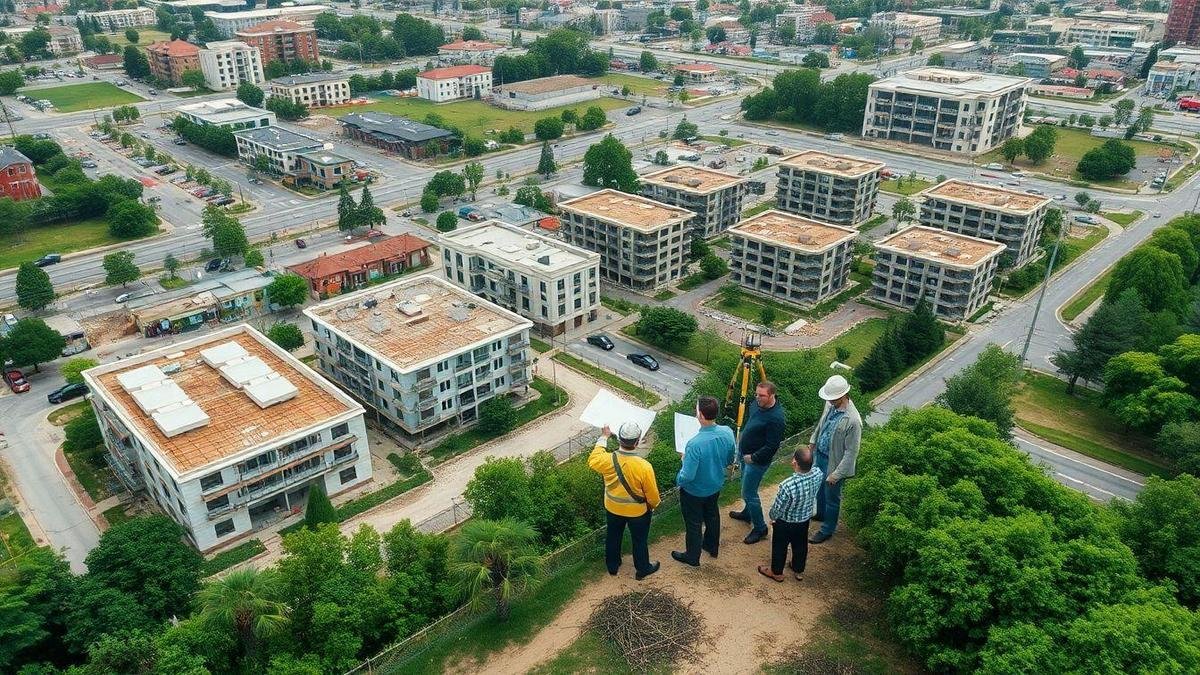
Importance of a Land Development Feasibility Study in US
Understanding the Basics of Feasibility Studies
A land development feasibility study in the US is a critical step for anyone looking to invest in real estate. This study helps investors understand whether a project is practical and profitable. It evaluates various elements, including market demand, zoning regulations, and financial projections. By examining these aspects, investors can make informed decisions and avoid costly mistakes.
Key Components of a Feasibility Study
A thorough feasibility study includes several key components:
| Component | Description |
|---|---|
| Market Analysis | Examines demand and competition in the area. |
| Site Analysis | Evaluates the land’s physical characteristics and zoning. |
| Financial Analysis | Projects costs, revenues, and potential return on investment. |
| Regulatory Review | Assesses local laws and regulations affecting development. |
These components work together to paint a clear picture of the project’s viability. Each section provides essential insights that guide the investor’s next steps.
The Role of Feasibility in Successful Projects
Feasibility studies play a vital role in the success of land development projects. They help identify potential risks and opportunities early on. By conducting these studies, investors can make strategic decisions that align with their goals. For instance, a well-conducted study might reveal that a particular location has a high demand for housing, leading to a profitable investment.
In summary, a land development feasibility study in the US is not just a formality; it is a foundational tool that can make or break a project. It empowers investors to navigate the complexities of land development with confidence.

Steps in the Feasibility Study Process
Initial Research and Data Gathering
In the land development feasibility study in the US, the first step is initial research and data gathering. This phase is crucial as it sets the groundwork for the entire project. Investors must collect relevant data about the location, demographics, and market trends. They should focus on understanding local zoning laws and environmental regulations.
A few key areas to consider during this stage include:
- Market Analysis: Understanding the demand for residential, commercial, or mixed-use developments.
- Site Selection: Evaluating potential sites based on accessibility, infrastructure, and existing developments.
- Financial Projections: Estimating costs, potential returns, and funding options.
Analyzing Site Conditions and Regulations
Next, investors must delve into analyzing site conditions and regulations. This involves examining physical attributes of the land, such as soil quality, topography, and existing utilities. Additionally, it is important to review local regulations that may impact development plans.
The analysis can be broken down into several components:
| Component | Description |
|---|---|
| Soil Testing | Determines the suitability of the land for building. |
| Environmental Impact | Assesses potential effects on local ecosystems. |
| Zoning Compliance | Ensures plans align with local zoning laws. |
Importance of Accurate Data Collection
Accurate data collection is the backbone of a successful feasibility study. Without precise information, investors may face unforeseen challenges that could derail their projects. For instance, if zoning laws are not thoroughly understood, it could lead to costly redesigns or even project cancellations. Understanding local zoning laws is essential to avoid such pitfalls.
In short, gathering and analyzing data is not just a step in the process; it is a vital component that can dictate the project’s success or failure. By paying close attention to details and regulations, investors can navigate the complexities of land development more effectively.

Market Analysis for Development
Identifying Target Markets
When considering land development, it is crucial to pinpoint the right target markets. Investors should look at areas where population growth is strong, economic activity is buzzing, and infrastructure is improving. This approach helps in selecting locations that promise a bright future.
Some key factors to consider include:
- Demographics: Understanding who lives in the area can help investors decide what type of development will succeed.
- Economic Indicators: Look for signs of job growth, rising incomes, and business expansion.
- Location: Proximity to schools, hospitals, and shopping centers can significantly impact demand.
Assessing Demand and Competition
Next, assessing demand and competition is essential. Investors need to know how much interest there is in a specific type of development. This means looking at:
- Current Trends: What types of properties are in high demand? Are people looking for single-family homes, apartments, or commercial spaces?
- Competitive Analysis: Who else is developing in the area? Understanding the competition can help investors find their niche.
| Factors to Assess | Description |
|---|---|
| Demand | Analyze what buyers or renters want. |
| Competition | Identify who else is developing similar properties. |
| Pricing | Determine what similar properties are selling or renting for. |
Utilizing Market Trends for Success
Utilizing market trends can lead to success in land development. Investors should keep an eye on emerging trends that may impact demand. For instance, the rise of remote work has changed what people want in a home. Many now seek larger spaces with home offices.
Additionally, sustainability is becoming a priority. Developments that focus on green living are gaining traction. This trend can attract environmentally conscious buyers. By understanding market trends, investors can make smarter decisions.
By staying informed and adapting to these trends, investors can position their projects to meet the needs of today’s market.
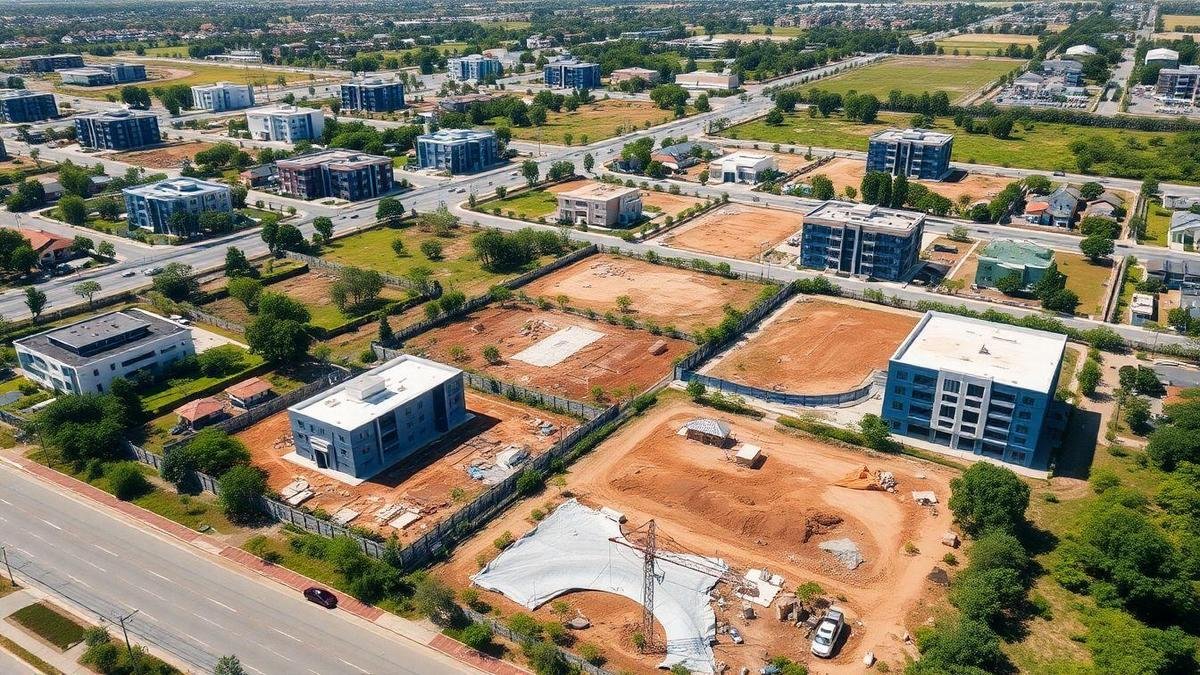
Financial Viability Study in Land Development
Estimating Development Costs
In land development, estimating costs is crucial. Investors need to know what they are getting into. This includes various expenses such as:
- Land acquisition: The price paid for the property.
- Construction costs: Expenses related to building infrastructure.
- Permitting fees: Costs for obtaining necessary approvals.
- Labor costs: Wages for workers involved in the project.
- Utilities installation: Fees for connecting water, electricity, and gas.
A detailed budget helps investors understand the total financial commitment. It’s essential to gather quotes from contractors and service providers. This way, they can avoid surprises down the road.
Projecting Revenue and Profitability
Once costs are estimated, projecting revenue becomes the next step. This involves calculating potential income from the land. Investors can consider:
- Sale of developed lots: Selling individual parcels after development.
- Rental income: Leasing properties to generate steady cash flow.
- Commercial opportunities: Developing retail or office spaces for businesses.
Profitability is determined by comparing total costs against projected income. A well-prepared financial forecast can help investors make informed decisions. For example, if the total cost is $1 million and projected revenue is $1.5 million, the potential profit is $500,000.
Financial Models for Investors
Investors often utilize financial models to analyze their options. These models help in making sound decisions. Some common models include:
| Model Type | Description |
|---|---|
| Cash Flow Model | Tracks income and expenses over time. |
| Break-Even Analysis | Determines when the project will start making a profit. |
| Return on Investment (ROI) | Measures the efficiency of an investment. |
Each model provides a different perspective on the investment’s potential. By employing these tools, investors can navigate the financial landscape of land development more effectively.

Zoning Regulations Evaluation
Understanding Local Zoning Laws
Local zoning laws are the rules set by city or county governments. These laws dictate how land can be used. They cover various aspects, such as:
- Residential: Where homes can be built.
- Commercial: Where businesses can operate.
- Industrial: Areas for factories and warehouses.
- Agricultural: Land for farming.
For global investors, knowing these laws is crucial. They provide a framework that can either support or hinder development. Each area has its own rules, and they can change. Therefore, staying updated is essential for making informed decisions. A comprehensive understanding of local zoning laws can enhance project success.
Impact of Zoning on Development Potential
Zoning laws can significantly affect a project’s potential. For instance, if a piece of land is zoned for residential use, it cannot be developed into a shopping center. This limitation can impact the land development feasibility study in the US.
Investors must consider:
- Permitted Uses: What can be built on the land.
- Density Restrictions: How many units can be constructed.
- Setback Requirements: How far buildings must be from property lines.
Understanding these factors helps investors gauge whether a site meets their goals.
Navigating Zoning Challenges in Projects
Zoning challenges can arise during a development project. These challenges may include:
- Re-zoning: Changing the zoning classification can be a lengthy process.
- Variances: Sometimes, investors need exceptions to the rules. This requires a formal request and justification.
- Community Opposition: Local residents may resist changes. Engaging with the community early can help ease concerns.
Here is a table summarizing common zoning challenges and their solutions:
| Challenge | Solution |
|---|---|
| Re-zoning delays | Early application and follow-ups |
| Need for variances | Strong justification and planning |
| Community pushback | Open dialogue and public meetings |
By being proactive and understanding local zoning laws, investors can better navigate these challenges.

Environmental Impact Assessment
Importance of Environmental Considerations
When investors embark on land development projects, environmental considerations become a vital aspect of planning. Understanding the impact of development on the environment is essential for sustainable growth. This not only protects natural resources but also enhances the community’s quality of life. Investors who prioritize environmental factors often find that their projects gain more support from local communities and regulatory bodies.
Evaluating Potential Environmental Risks
Identifying potential environmental risks is crucial in land development feasibility studies in the US. These risks can include:
- Soil contamination
- Water quality issues
- Loss of biodiversity
- Air pollution
By assessing these risks early, investors can make informed decisions that lead to better outcomes. This proactive approach helps in avoiding costly delays and potential legal issues down the line.
Strategies for Mitigating Environmental Impact
To minimize environmental impact, investors can adopt various strategies. Here are some effective methods:
| Strategy | Description |
|---|---|
| Sustainable materials | Use eco-friendly building materials. |
| Green spaces | Incorporate parks and gardens into designs. |
| Water management | Implement systems for rainwater harvesting. |
| Energy efficiency | Utilize renewable energy sources like solar. |
These strategies not only reduce negative impacts but can also lead to long-term savings and increased property value. By fostering a sustainable approach, investors can contribute positively to the environment while achieving their development goals.

Site Analysis Feasibility
Assessing Site Location and Accessibility
When it comes to land development feasibility study in the US, the site location plays a pivotal role. Investors must consider how easy it is to reach the site. A location that is hard to access can deter potential buyers or tenants.
Key factors to consider include:
- Proximity to Major Roads: Sites near highways or main roads are often more desirable.
- Public Transportation Availability: Locations with nearby bus or train stations attract more visitors.
- Surrounding Amenities: Access to schools, shopping centers, and parks can enhance the site’s appeal.
Evaluating Utilities and Infrastructure
Utilities and infrastructure are the backbone of any development project. A site needs to have essential services like water, electricity, and sewage. Without these, even the best location can fall flat.
Here’s a quick overview of what to assess:
| Utility | Importance |
|---|---|
| Water Supply | Essential for residential and commercial use |
| Electricity | Vital for all types of developments |
| Sewage and Drainage | Prevents flooding and ensures sanitation |
| Internet Access | Increasingly important for modern businesses |
Understanding the existing infrastructure can save time and money. If a site lacks essential utilities, investors may face extra costs to bring them in.
Site Characteristics That Affect Development
Certain site characteristics can significantly impact the feasibility of a project. These can include:
- Topography: A flat site is generally easier to build on than a hilly one.
- Soil Quality: Some soil types may require special foundations, adding to costs.
- Zoning Regulations: Local laws dictate what can be built and where.
- Environmental Concerns: Sites near water bodies may face stricter regulations.
By evaluating these characteristics early in the process, investors can avoid pitfalls that could derail their projects.
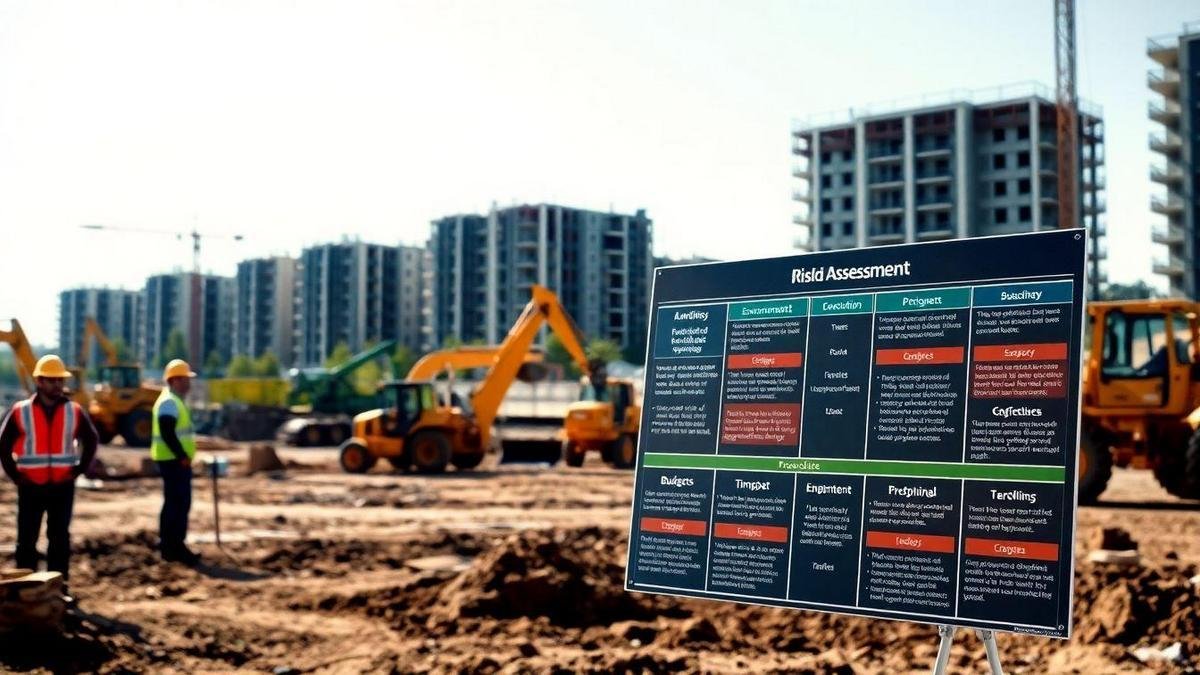
Curious how these digital strategies work in real life?
Watch our latest YouTube video where we dive into the power of Social Media, SEO, and Online Sales Tactics, illustrated by a compelling real estate success story. Tap in to see how theory turns into results!
Project Risk Analysis in Land Development
Identifying Potential Risks
In the land development sector, understanding the potential risks is crucial for investors. These risks can stem from various sources, including:
- Market Fluctuations: Changes in demand and supply can directly impact property values.
- Regulatory Changes: New laws or amendments can alter project feasibility.
- Environmental Concerns: Issues like pollution or wildlife protection can delay or halt projects.
- Financial Risks: Inadequate funding or rising costs can jeopardize project completion.
By identifying these risks early on, investors can better prepare for challenges that may arise during the development process.
Strategies for Risk Mitigation
Once potential risks have been identified, the next step is to develop strategies to minimize their impact. Some effective strategies include:
- Conducting Comprehensive Research: A thorough land development feasibility study in the US can shed light on market conditions and regulatory environments.
- Engaging Local Experts: Collaborating with local professionals can provide valuable insights into regional risks.
- Diversifying Investments: Spreading investments across different projects can reduce overall risk exposure.
- Implementing Strong Financial Controls: Keeping tight control over budgets and expenses can prevent financial pitfalls.
Adopting these strategies can help investors navigate the unpredictable nature of land development.
Importance of Risk Assessment in Feasibility Studies
Risk assessment plays a vital role in feasibility studies. It helps investors understand whether a project is worth pursuing. A well-conducted risk assessment can:
- Highlight Critical Issues: Identifying potential roadblocks early on can save time and resources.
- Guide Decision Making: Investors can make informed choices based on assessed risks.
- Enhance Project Planning: Understanding risks allows for better planning and resource allocation.
By prioritizing risk assessment in feasibility studies, investors can position themselves for success in land development.
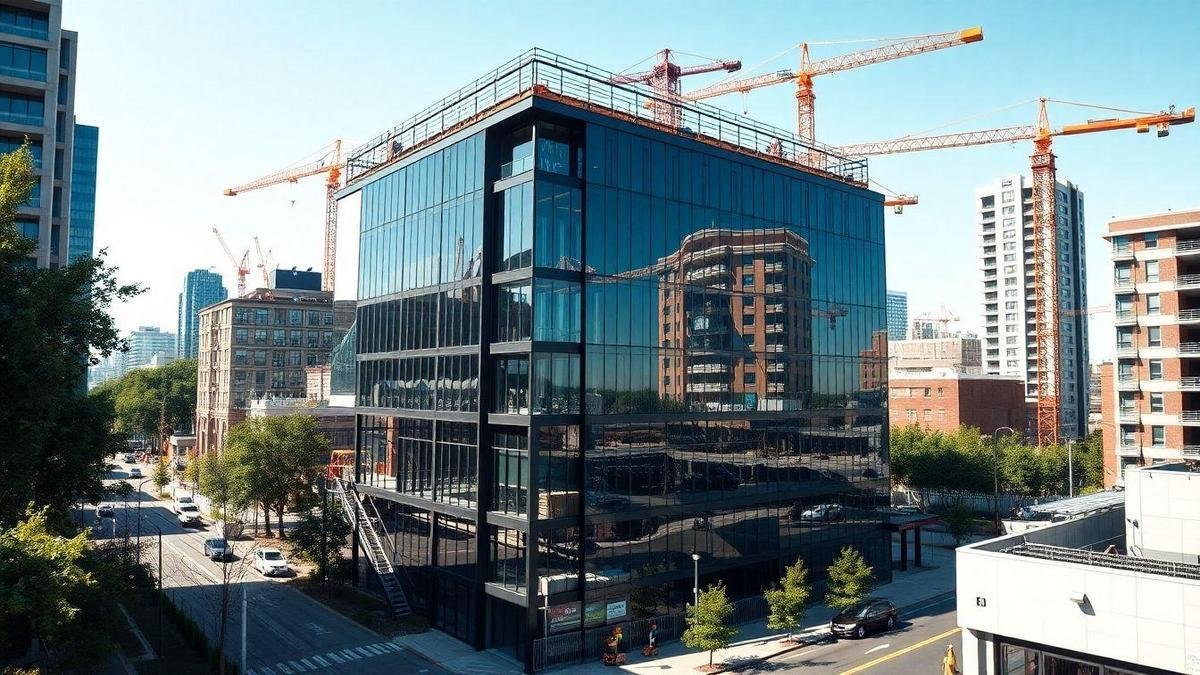
Real Estate Development Assessment
Evaluating Property Value and Potential
When investors look at properties, they need to evaluate their value and potential carefully. This means checking several factors. First, it’s important to look at the location. Properties in good areas tend to have higher values. Next, the size and zoning of the land matter. Zoning laws can dictate what can be built there, which affects its potential for development.
Investors might also want to consider the condition of the property. A rundown building may seem cheap but could require a lot of money to fix. On the other hand, a well-maintained property might be worth the investment.
Here’s a simple table to summarize these factors:
| Factor | Importance |
|---|---|
| Location | High demand can increase value |
| Size | Larger properties can offer more options |
| Zoning | Determines what can be built |
| Condition | Affects renovation costs |
Understanding Market Conditions for Development
Understanding market conditions is crucial for any investor. This means looking at supply and demand in the area. If many people want to buy homes but there aren’t enough available, prices will rise. This is a good sign for development.
Investors should also keep an eye on interest rates. Lower rates make borrowing money cheaper, which can boost development. Additionally, they should watch for any economic changes. A growing economy often leads to more jobs, which means more people looking for homes.
The Role of Real Estate Trends in Feasibility
Real estate trends play a big role in determining if a project is feasible. For example, if many people are moving to an area, that’s a trend worth noting. It shows a potential for growth. Investors should also pay attention to trends in what types of homes people want.
For instance, if more buyers are looking for eco-friendly homes, it might be smart to develop properties that meet this demand.
In summary, keeping an eye on trends helps investors make informed decisions. It can be the difference between a successful project and a failed one.
In the End…
The land development feasibility study in the US serves as a cornerstone for successful real estate ventures. By meticulously analyzing market demand, financial viability, and regulatory frameworks, investors can navigate the complex landscape of land development with confidence. Each component—from site analysis to risk assessment—plays a crucial role in determining whether a project is worth pursuing.
Investors who prioritize comprehensive feasibility studies not only mitigate risks but also unlock opportunities for profitable developments. As the saying goes, “A stitch in time saves nine.” Taking the time to conduct thorough research and analysis can save investors from costly mistakes down the road.
For those eager to dive deeper into the world of land development, further insights and resources await at Land Development Hub.
Eduardo Bugallo, PhD.
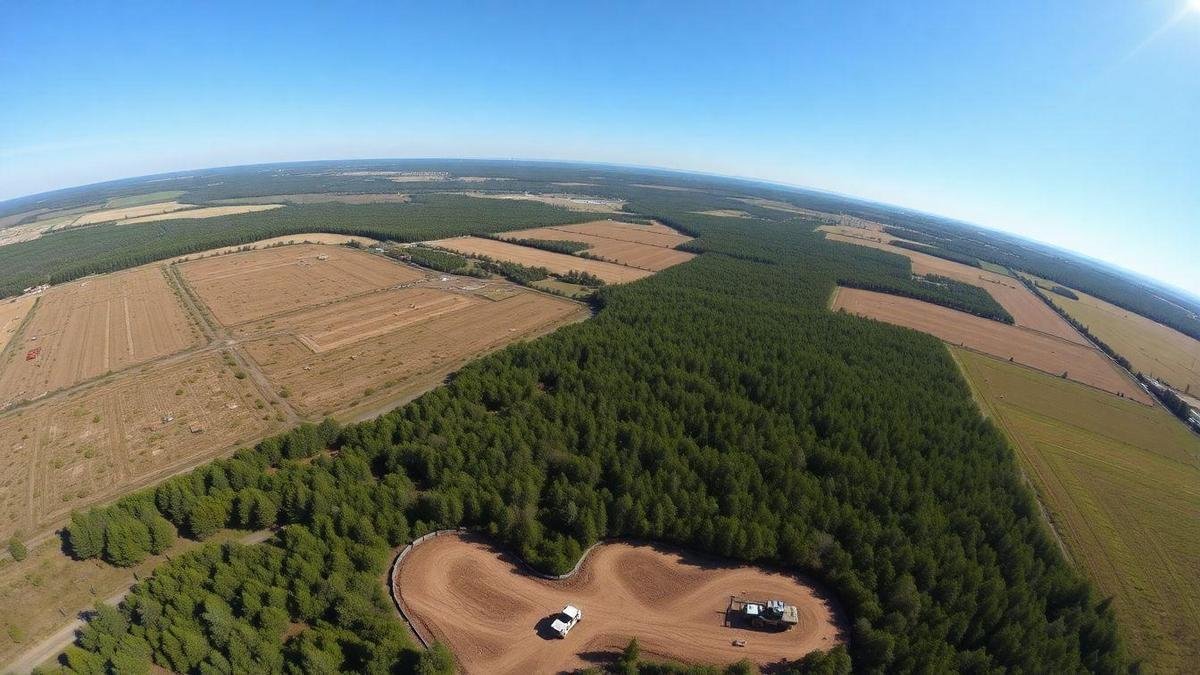
No responses yet